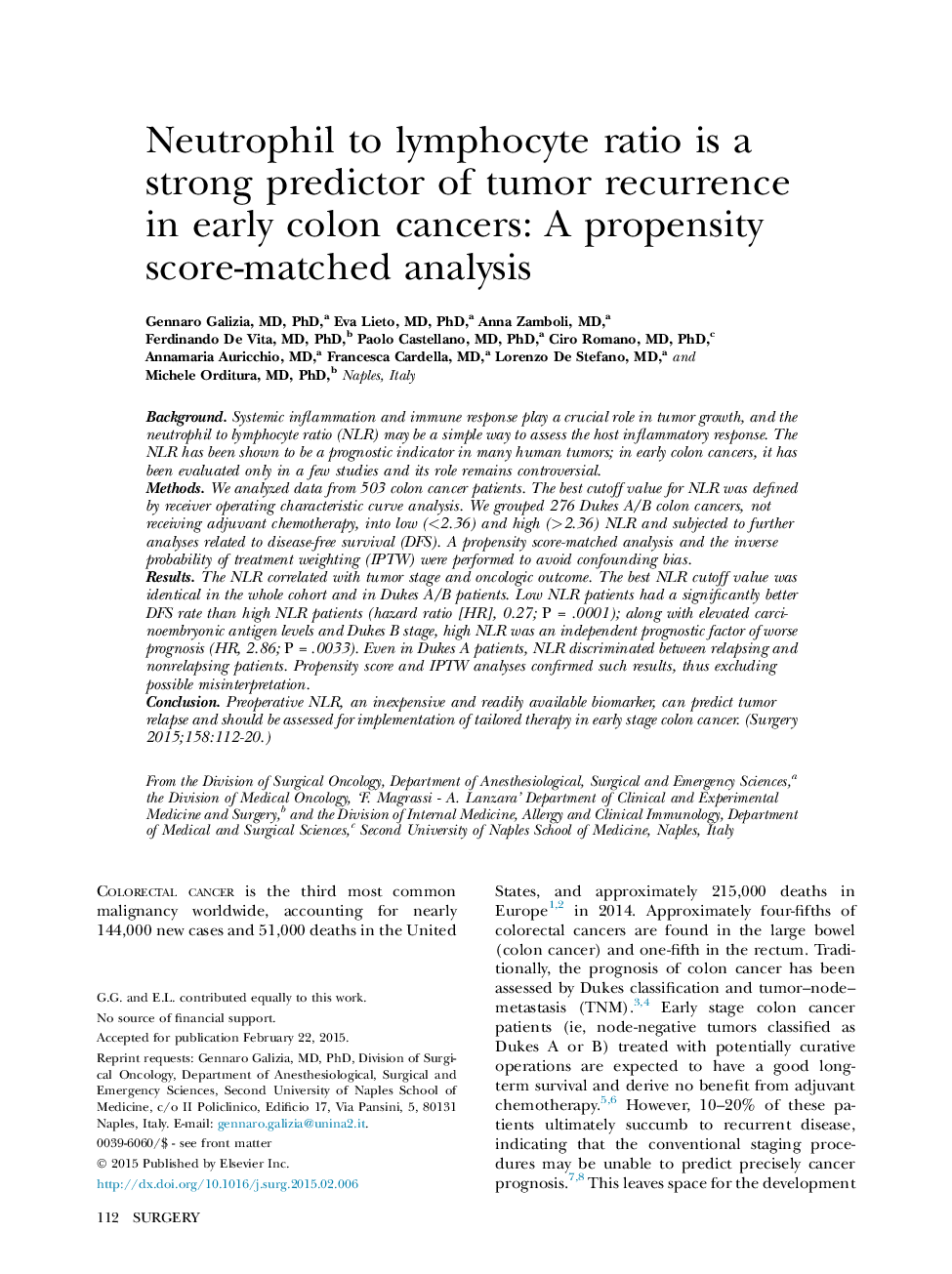| Article ID | Journal | Published Year | Pages | File Type |
|---|---|---|---|---|
| 6255303 | Surgery | 2015 | 9 Pages |
BackgroundSystemic inflammation and immune response play a crucial role in tumor growth, and the neutrophil to lymphocyte ratio (NLR) may be a simple way to assess the host inflammatory response. The NLR has been shown to be a prognostic indicator in many human tumors; in early colon cancers, it has been evaluated only in a few studies and its role remains controversial.MethodsWe analyzed data from 503 colon cancer patients. The best cutoff value for NLR was defined by receiver operating characteristic curve analysis. We grouped 276 Dukes A/B colon cancers, not receiving adjuvant chemotherapy, into low (<2.36) and high (>2.36) NLR and subjected to further analyses related to disease-free survival (DFS). A propensity score-matched analysis and the inverse probability of treatment weighting (IPTW) were performed to avoid confounding bias.ResultsThe NLR correlated with tumor stage and oncologic outcome. The best NLR cutoff value was identical in the whole cohort and in Dukes A/B patients. Low NLR patients had a significantly better DFS rate than high NLR patients (hazard ratio [HR], 0.27; P = .0001); along with elevated carcinoembryonic antigen levels and Dukes B stage, high NLR was an independent prognostic factor of worse prognosis (HR, 2.86; P = .0033). Even in Dukes A patients, NLR discriminated between relapsing and nonrelapsing patients. Propensity score and IPTW analyses confirmed such results, thus excluding possible misinterpretation.ConclusionPreoperative NLR, an inexpensive and readily available biomarker, can predict tumor relapse and should be assessed for implementation of tailored therapy in early stage colon cancer.
